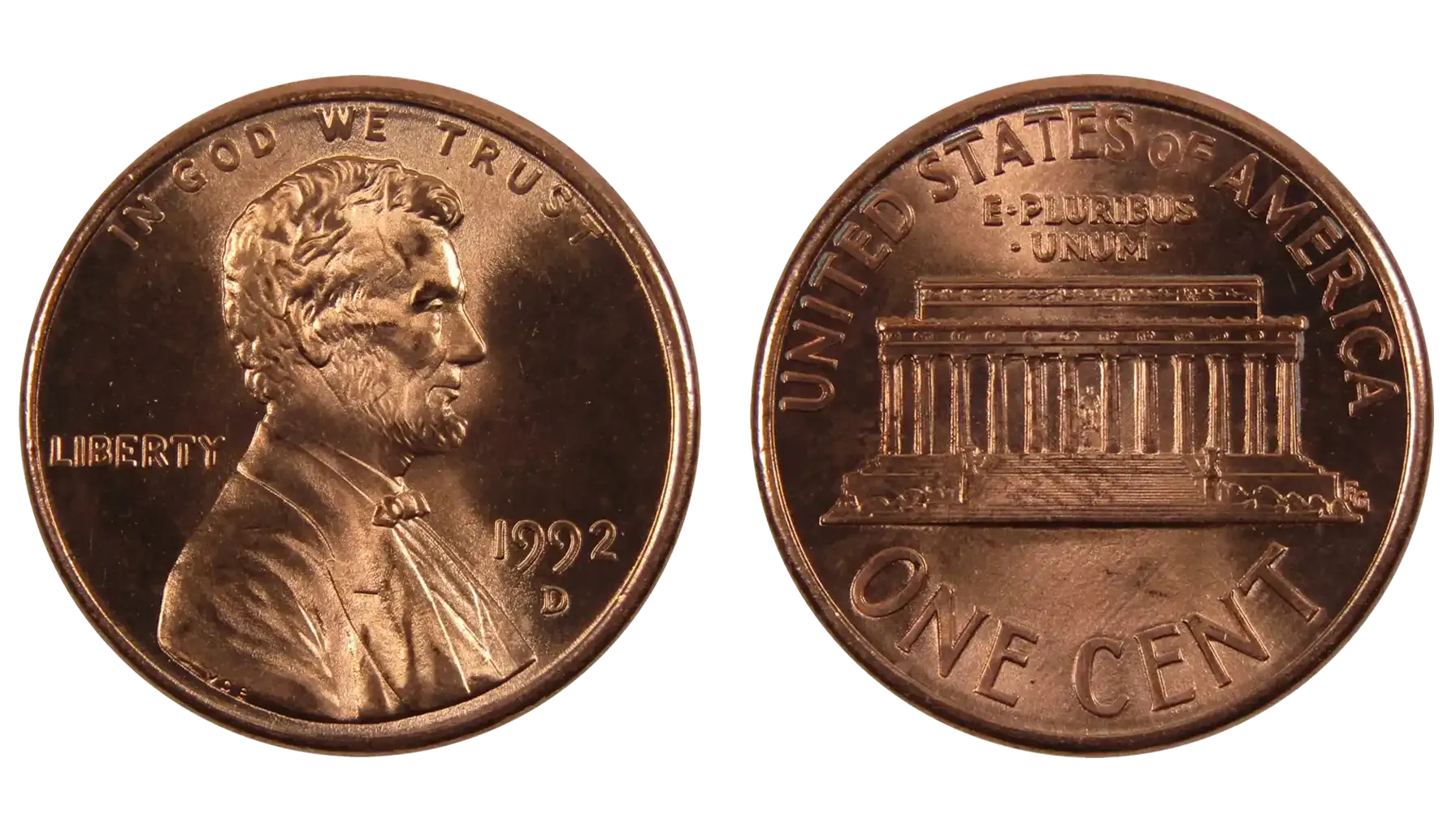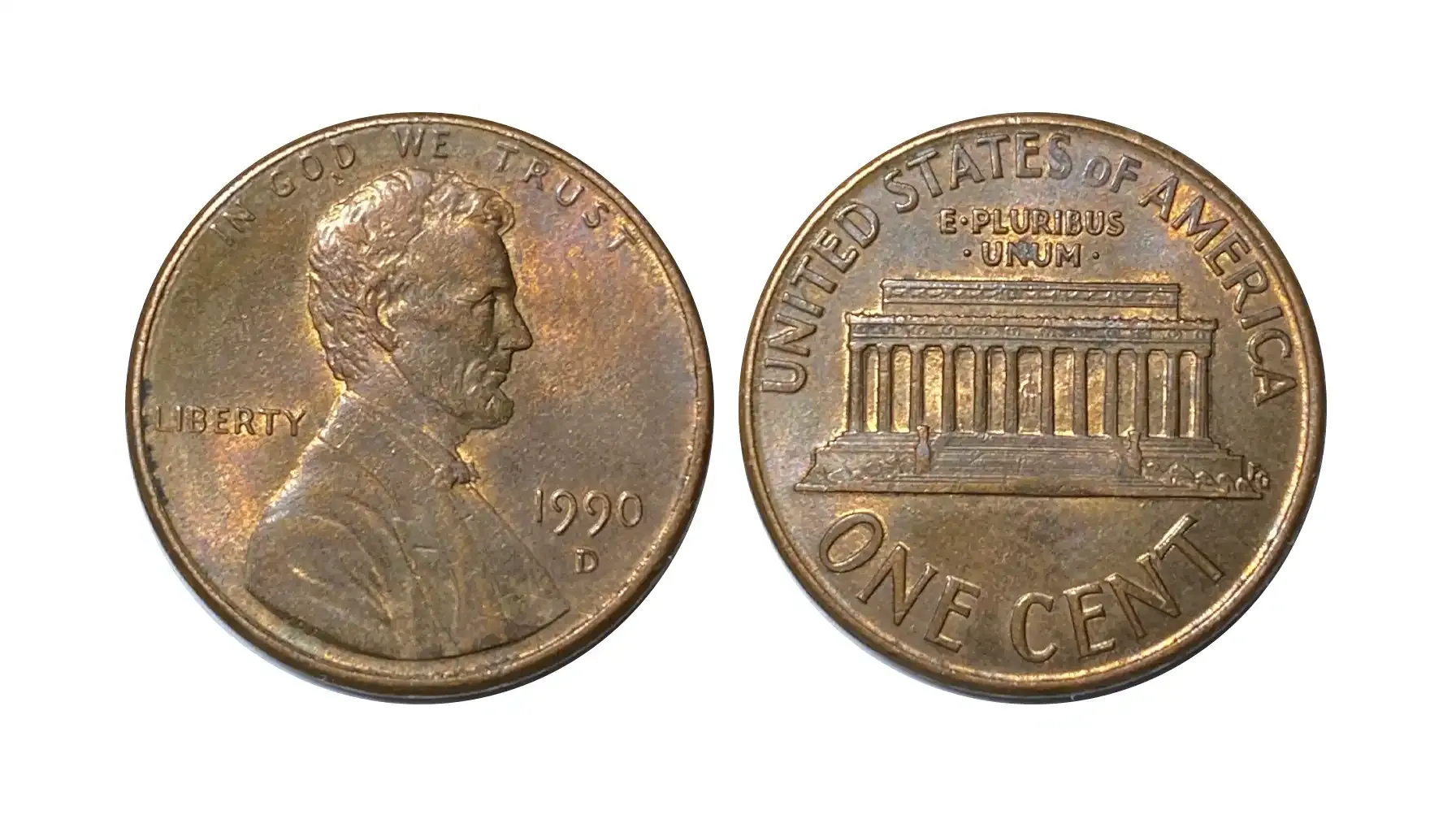What is double die on a penny? In short: a single one receives a misaligned or multiple hub impressions. This leads to duplication of design elements—most frequently the date, legends, and Liberty.
So, what does double die mean on a penny?. Unlike common wear or mechanical doubling, these ones originate at the die stage, not during the coin strike. Thus, each coin struck by that faulty one will carry the same duplication. That is why they are categorically mint errors—not post-mint damage.
What does a double die penny look like? Thickened, often shadowed text or numbers. It is distinct from damage or blur; it is embedded in the very metal of the coin’s design.
Can you identify coin by image? Of course! Just read the article until the end.
And yes—double die pennies worth money. The right one, in the right condition, can rival a car in value.

Top 10 Double Die Penny Years
Name | Year | Composition | Top Auction Value ($) |
1955 DDO | 1955 | 95% copper | $125,000 |
1969-S DDO | 1969 | 95% copper | $126,500 |
1972 DDO | 1972 | 95% copper | $14,400 |
1983 DDR | 1983 | Copper-plated zinc | $7,000 |
1984 DDO | 1984 | Copper-plated zinc | $1,800 |
1995 DDO | 1995 | Copper-plated zinc | $500 |
1997 DDO | 1997 | Copper-plated zinc | $150 |
2006 DDR | 2006 | Copper-plated zinc | $300 |
1958 DDO | 1958 | 95% copper | $1,136,250 |
1982 Double Die Small Date Zinc | 1982 | Zinc | $1,200 |
1955 Doubled Die Obverse Lincoln Penny
One of the most popular double die Lincoln penny examples is the 1955 DDO. The doubling on the obverse inscriptions, particularly "LIBERTY" and "IN GOD WE TRUST," is unmistakable. We are talking ghost text levels of doubling, visible even without magnification.
What is a double die wheat penny? Struck at the Philadelphia Mint during an overnight shift, the flawed one went unnoticed until thousands had entered circulation. By the time it was detected, it was too costly to recall the coins. These circulated primarily in the Northeast U.S. and were even handed out as change in cigarette packs—talk about a collectible with attitude.
Design Characteristics: The doubling is clean, rounded, and consistent—a textbook case of Class I hub doubling. This is exactly “what is a double die obverse penny.”
Value: In uncirculated condition, this double die obverse wheat penny can fetch between $10,000–$125,000, depending on grade and eye appeal.
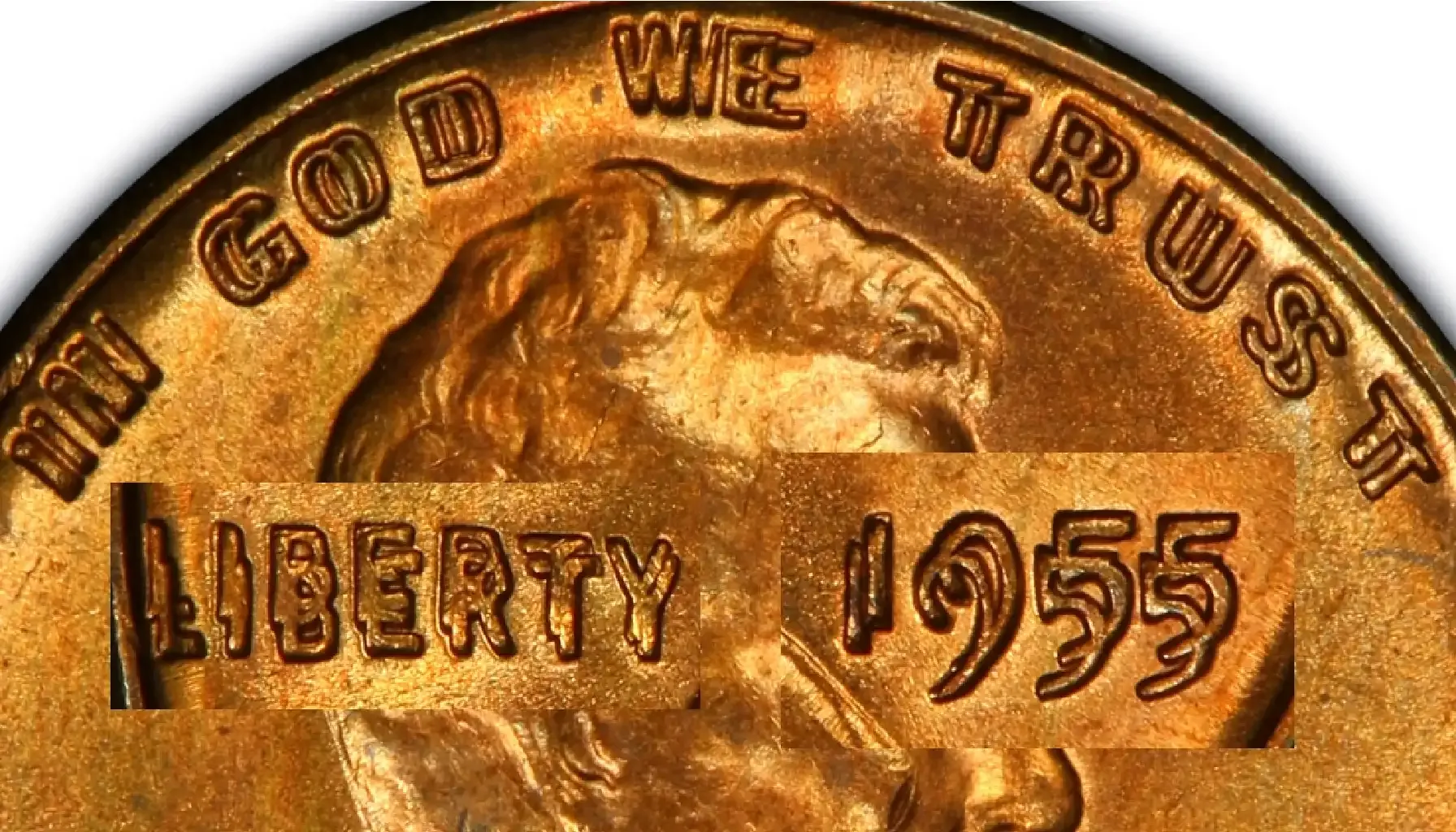
1969-S Doubled Die Obverse Lincoln Penny
Perhaps the most interesting—and among the rarest—of all S double die obverse Lincoln penny errors. This coin’s duplicity in its motto and date is profound. Each letter of "LIBERTY" and the motto shows crisp doubling.
It was discovered in the early 1970s. Some initial examples were seized by the Secret Service under suspicion of counterfeiting. Once authenticated by the U.S. Mint, the coin’s legitimacy—and its desirability—increased.
Design Characteristics: Struck at San Francisco, the doubling on the obverse is bold and well-aligned, confirming true hub doubling.
Value: Examples in mint state have surpassed $126,500, cementing its place as one of the most popular double die penny examples.
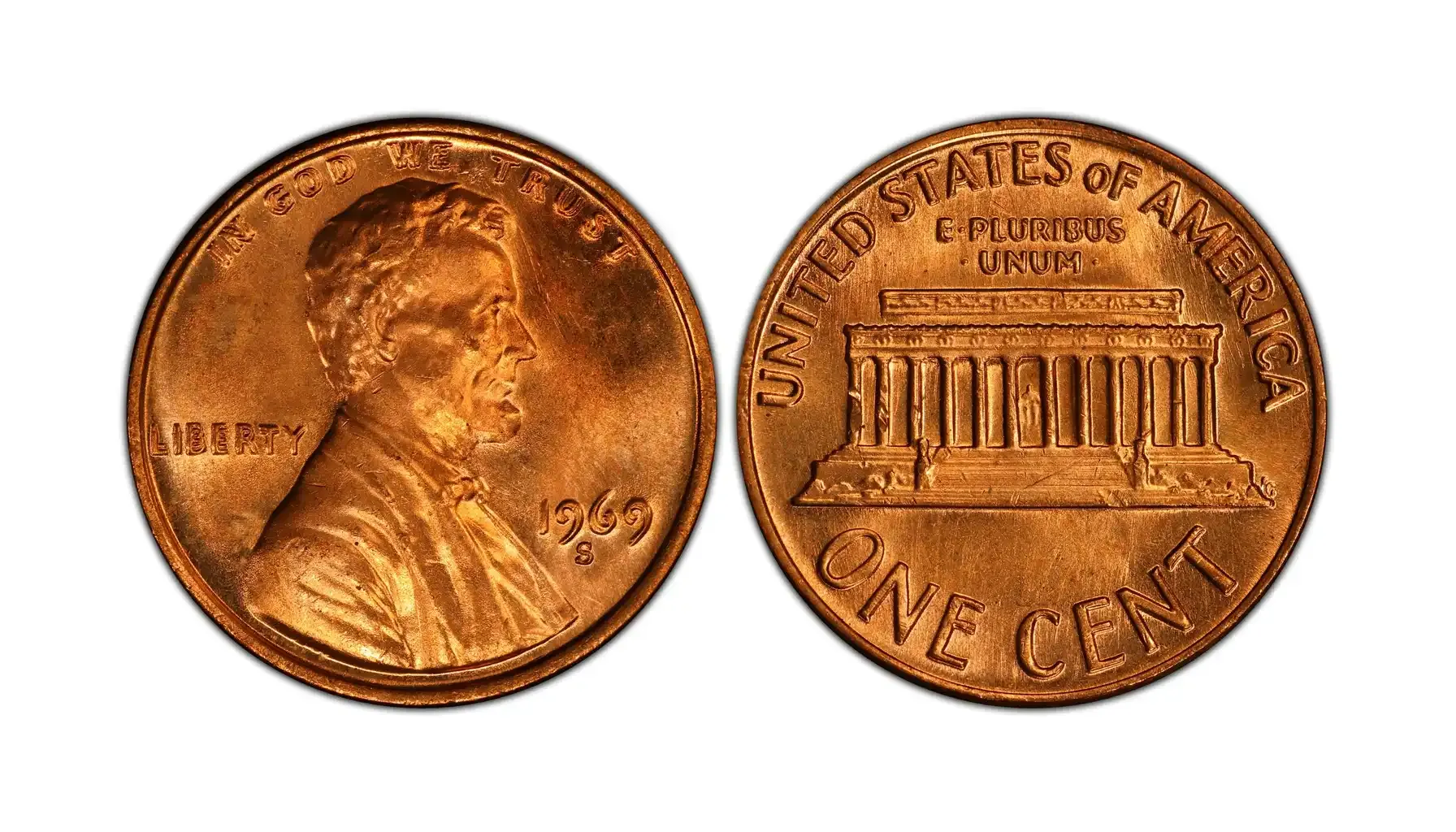
1972 Doubled Die Obverse
Less infamous than its 1955 cousin, but just as visually compelling. Doubling is evident on the date and motto: it shows rounded separation in the lettering—ideal for showing how to identify a double die penny.
Design Characteristics: A strong Class I, this penny features a clockwise rotation doubling pattern.
Varieties: There are seven recognized DDOs for 1972, but only one exhibits dramatic doubling. The others are subtle and often require magnification.
Value: Top specimens graded MS-65 Red by PCGS or NGC have realized up to $14,400.
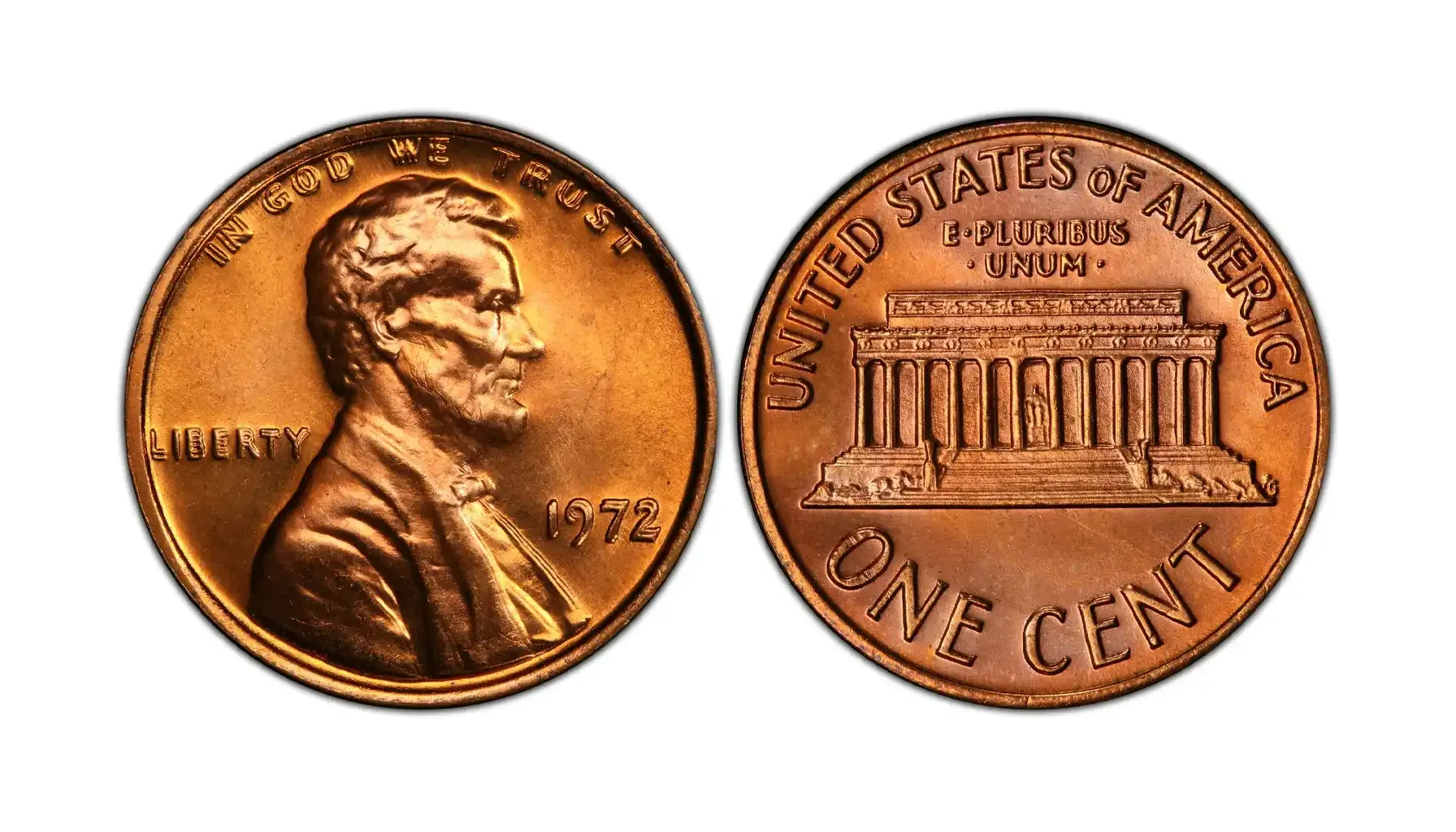
1983 Doubled Die Reverse
This error flips the script. What is a double die reverse penny? This is it. The reverse of this Memorial cent has doubling on “ONE CENT” and “E PLURIBUS UNUM.”
Design Characteristics: One of the finest examples of reverse hub doubling. The doubling is evident in bold strokes, particularly along the Lincoln Memorial’s architecture and inscriptions.
Value: High-grade examples have sold between $3,000–$7,000.

1984 Doubled Die Obverse
A subtle but significant error. The earlobe of Lincoln appears doubled—blink and you will miss it.
Double Die Penny Meaning: Fine doubling visible only under magnification. A must-know for anyone distinguishing what is a double die penny look like from mechanical doubling.
Value: In MS condition, prices hover around $1,000–$1,800. Not a record-breaker, but a staple for DDO specialists.
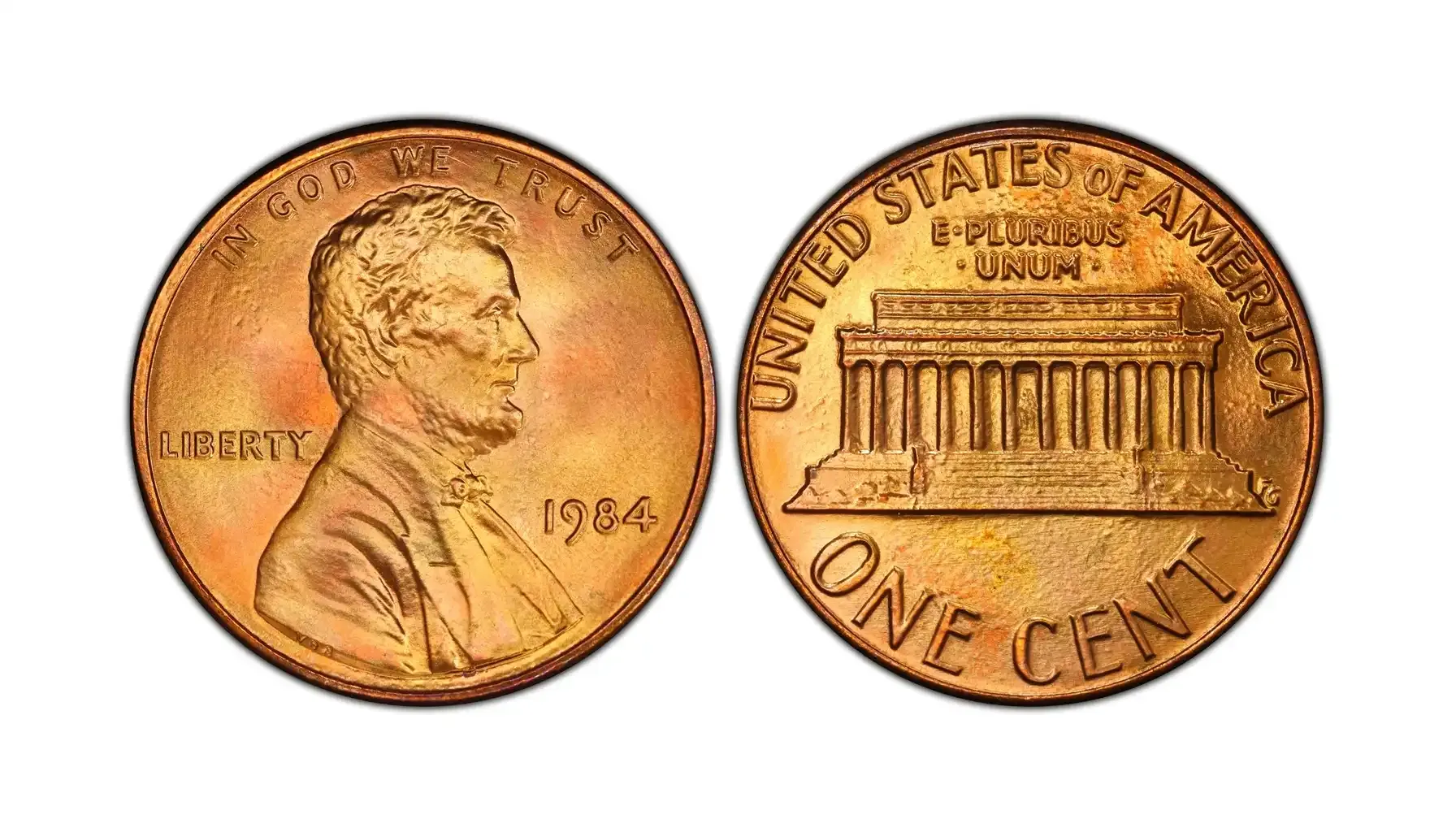
1995 Doubled Die Obverse
The first “mainstream” of the zinc era. Strikingly clear doubling on “LIBERTY” and “IN GOD WE TRUST.” It caused such a stir, it made national news and numismatics forums went wild.
Design Characteristics: Clear rounded separation on the letters. This coin introduced a generation to how to tell if a penny is double die.
Value: Common but popular. Expect $50–$500 depending on grade.
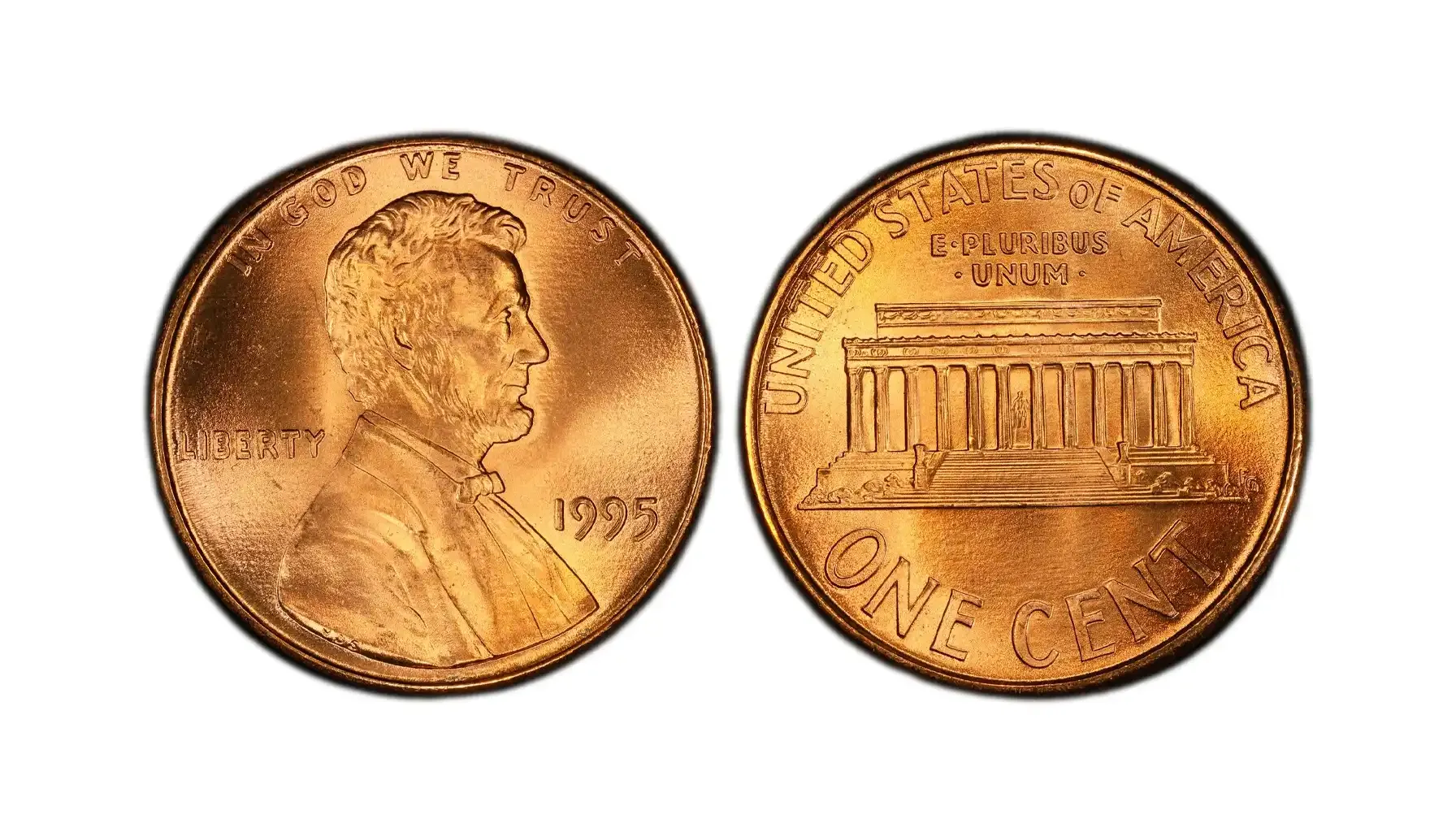
1997 Doubled Die Obverse
A quieter entry in the canon. Doubling is light but visible on Lincoln’s profile and lettering.
Design Characteristics: Requires precise optics to distinguish. Often overlooked, but loved by specialists.
Value: Typically trades for $30–$150.

2006 Doubled Die Reverse
A modern example showing that errors did not stop in the 20th century. Here, the Lincoln Memorial's columns display minute yet definitive duplication.
Design Characteristics: Doubling in the pillars and reverse inscriptions. Proof-like fields help exaggerate the effect.
Value: How much is a double die penny worth? Circulates in the $100–$300 range.
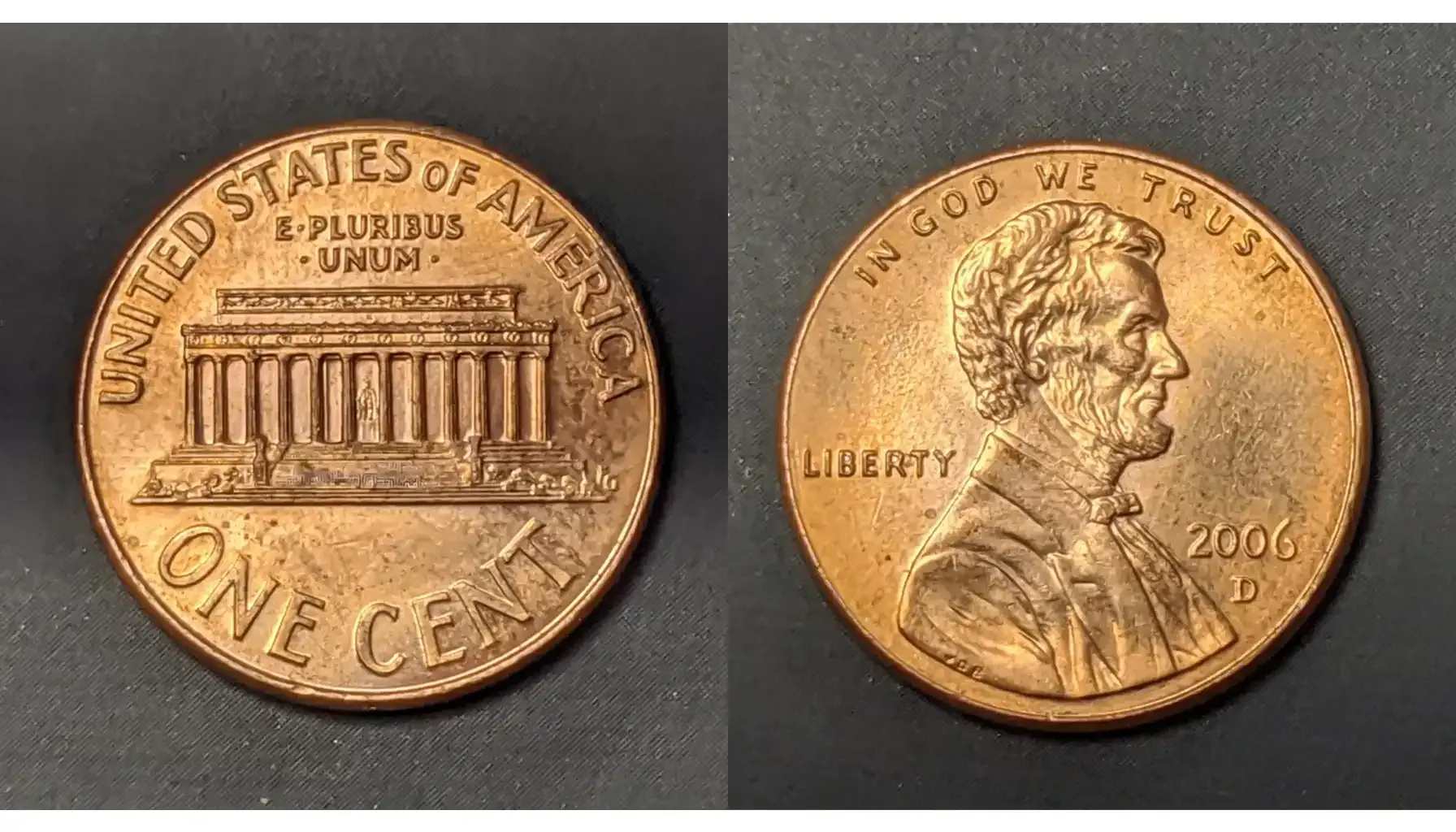
1958 Doubled Die Obverse (Ultra-Rare)
The ghost. The unicorn. Call it what you will, but this coin is a numismatic legend. Only three known examples exist.
Design Characteristics: Like the 1955, but even sharper.
Value: Not known until decades after minting. One fetched over $1.1 million in 2023.

1982 Small Date Zinc Double Die
An underrated and complex issue. 1982 saw both copper and zinc planchets, small and large date variations.
Design Characteristics: Doubling most often seen in the date. You should know your double die penny vs regular diagnostics here.
Value: Depending on variety and grade, prices reach up to $1,200.
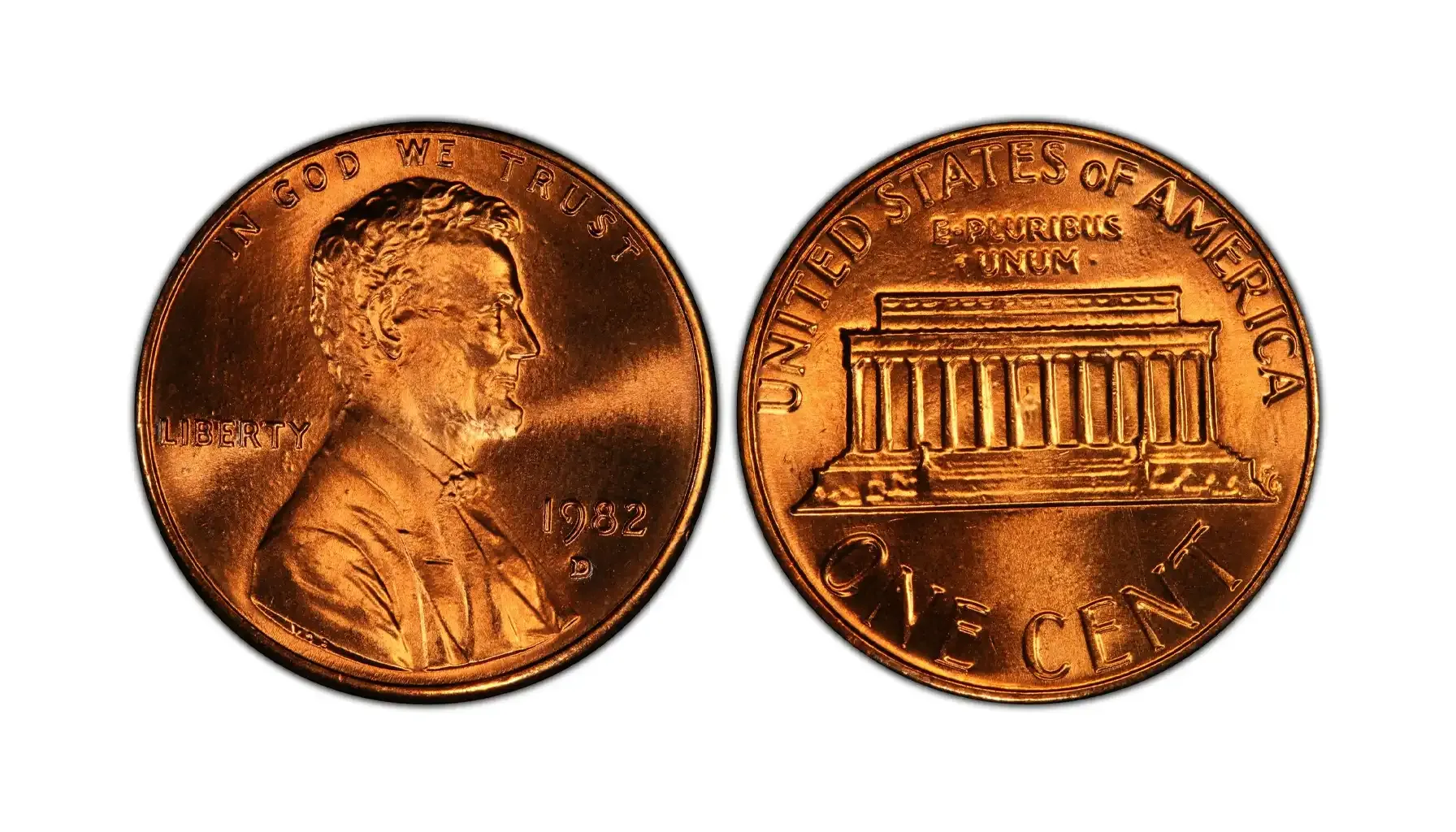
How to Avoid Fakes
Not all doubling is valuable—machine doubling and post-mint damage are often mistaken for the real thing. To avoid fakes:
Look for rounded, raised doubling on the design (especially the date, LIBERTY, and IN GOD WE TRUST). Flat, shelf-like doubling = machine error, not a true one.
Use magnification and angled lighting to inspect subtle errors—especially on modern issues.
Compare with verified diagnostics. Each major variety has distinct markers; reference trusted catalogs.
Buy certified coins like PCGS, NGC.
Do Not Guess, Scan It
By now, you know what is double die penny, the difference between error vs regular ones, and even how to avoid the confusion of penny double die vs machine doubling. But if you are still asking—it is time to digitize your search.
With Coin ID Scanner, there is no guesswork:
Instantly identify your coin.
Compare your coin to hundreds of known double die error penny examples.
Get accurate market estimates in real time.
Turn pocket change into collector’s gold. Scan your coins today.


